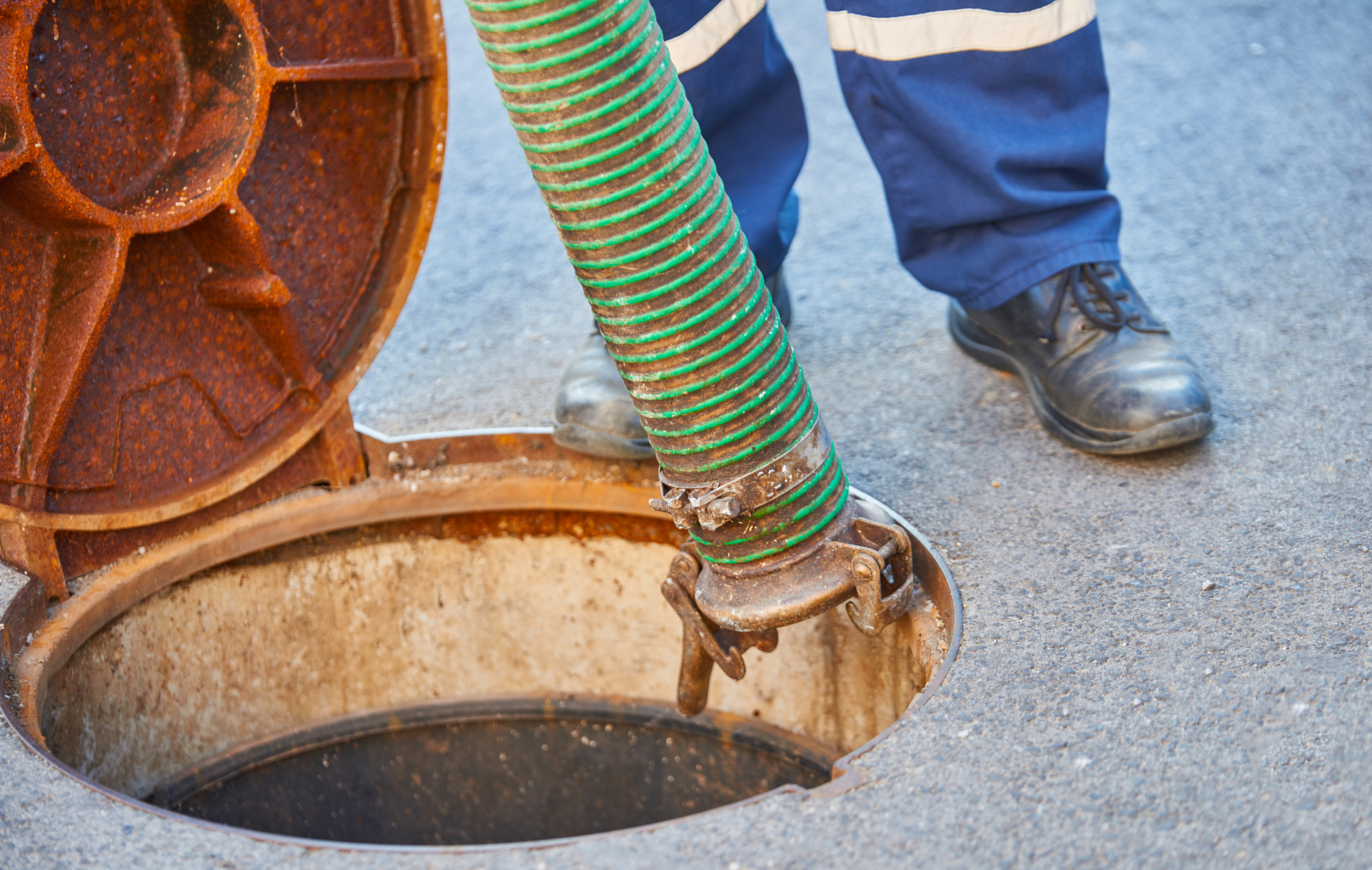FAQ: How Does a Septic Tank Work?
March 13, 2024
FAQ: How Does a Septic Tank Work?
If you're a homeowner in Oxford, MS, with a septic system, understanding how your septic tank works is crucial to its proper maintenance and functioning. Septic tanks are a common wastewater treatment solution for homes that aren't connected to municipal sewer lines. In this comprehensive guide, brought to you by Oxford Septic Service, we'll answer the frequently asked question: "How does a septic tank work?" We'll dive deep into the inner workings of septic tanks, their role in wastewater treatment, and how you can ensure their efficiency.
The Basics of a Septic Tank
Before we delve into the mechanics, let's start with the basics. A septic tank is a large, watertight container buried underground near your home. It receives all the wastewater generated in your household, including water from sinks, toilets, showers, and laundry. This tank is a critical component of your septic system, where the initial treatment of wastewater occurs.
Wastewater Collection and Separation
Here's a step-by-step breakdown of how a septic tank operates:
Wastewater Collection: Every time you flush a toilet, run the tap, or use a household appliance that produces wastewater, it flows through pipes into the septic tank.
Initial Separation: In the septic tank, the wastewater undergoes an initial separation process. Solid waste, referred to as sludge, settles at the bottom of the tank, while lighter materials like grease and oils float to the top, forming a scum layer.
Treatment Begins: Once separated, naturally occurring bacteria inside the tank start the treatment process. These bacteria break down the organic matter in the wastewater, converting it into gases and liquids.
Clarified Effluent: After this initial treatment, the wastewater becomes clearer and is now referred to as "effluent." It's important to note that while the effluent is clarified, it's not yet safe for direct release into the environment.
Effluent Disposal
The next stage involves safely disposing of the treated effluent. Here's how it works:
Effluent Outlet: The clarified effluent exits the septic tank through an outlet pipe, leaving the solid waste (sludge) behind.
Distribution: The effluent is then evenly distributed into a network of underground pipes, known as the drain field or leach field.
Final Treatment: As the effluent percolates through the soil in the drain field, it undergoes further natural treatment. Soil bacteria and microorganisms continue to break down any remaining contaminants, purifying the water.
Environmental Return: The now-treated water safely returns to the environment, typically reentering the groundwater or flowing into nearby surface water bodies. This process ensures that the water is clean and free from harmful contaminants.
The Importance of Maintenance
Maintaining your septic tank is essential to ensure it continues to operate efficiently. Over time, the solid waste (sludge) that settles at the bottom of the tank accumulates and can reduce the tank's capacity. This accumulation may lead to blockages, backups, or even septic system failure if left unchecked. Regular septic tank pumping, typically recommended every 3 to 5 years, removes the accumulated sludge, preventing these issues.
FAQ: How Often Should I Pump My Septic Tank?
The frequency of septic tank pumping depends on several factors, including the tank's size, the number of occupants in your household, and your water usage. It's generally recommended to have your septic tank pumped every 3 to 5 years. However, consulting with a professional septic service provider like Oxford Septic Service is the best way to determine the ideal pumping schedule for your specific system.
Choosing a Professional Septic Service Provider
When it comes to septic system maintenance, including pumping, it's crucial to choose a reputable and experienced septic service provider. Here's what to look for:
Experience: Opt for a company with a proven track record and years of experience in the industry.
Licensed and Insured: Ensure the provider is licensed and properly insured to protect you and your property.
Environmental Compliance: Choose a company that disposes of septic waste in an environmentally responsible manner.
Transparent Pricing: Look for a provider that offers transparent pricing with no hidden fees.
Excellent Reputation: Read reviews and ask for referrals to find a provider with a strong reputation for quality service.
Conclusion
Understanding how a septic tank works is fundamental for homeowners with septic systems. It's a testament to the efficiency and sustainability of septic systems in treating and safely disposing of wastewater. Regular maintenance, including septic tank pumping, ensures that your septic system continues to function correctly and efficiently, preventing costly repairs and environmental contamination. To schedule your next septic tank pumping service or for more information on maintaining your septic system, contact Oxford Septic Service

Septic system failures can be costly, inconvenient, and hazardous to both property and health. Fortunately, with proper maintenance and proactive measures, many septic system failures can be prevented. In this guide, Oxford Septic Services shares valuable tips to help homeowners and businesses avoid septic system failures and ensure the long-term functionality of their systems. Chapter 1: Regular Maintenance Inspections Routine maintenance inspections are essential for identifying potential issues early and preventing costly repairs. Oxford Septic Services recommends scheduling regular inspections to assess the condition of your septic system and address any problems before they escalate. Chapter 2: Timely Septic Tank Pumping Regular septic tank pumping is crucial for removing accumulated solids and preventing clogs and backups. Oxford Septic Services advises homeowners to adhere to a consistent pumping schedule based on factors such as household size and usage to maintain optimal tank capacity. Chapter 3: Proper Waste Disposal Practices Improper disposal of household waste can overload septic systems and lead to system failures. Oxford Septic Services recommends avoiding flushing non-biodegradable items, grease, and chemicals down drains and toilets to prevent clogs and damage to the system. Chapter 4: Protecting the Drain Field The drain field plays a critical role in wastewater treatment and dispersal. To prevent drain field failure, Oxford Septic Services advises property owners to avoid parking vehicles or installing structures over the drain field and to maintain proper landscaping to prevent root intrusion. Chapter 5: Prompt Repairs and Maintenance Addressing minor issues promptly can prevent them from escalating into major septic system failures. Oxford Septic Services recommends contacting a professional at the first sign of trouble, such as slow drains, foul odors, or sewage backups, to prevent further damage. Chapter 6: Environmental Awareness Understanding the environmental impact of septic system failures can motivate property owners to prioritize proper maintenance and care. Oxford Septic Services emphasizes the importance of responsible waste management and eco-friendly practices to protect local water sources and ecosystems. Conclusion: By following these tips from Oxford Septic Services, homeowners and businesses can take proactive steps to prevent septic system failures and maintain the functionality of their systems for years to come. With regular maintenance, proper waste disposal practices, and prompt repairs, property owners can avoid costly and disruptive septic system failures and enjoy peace of mind knowing their systems are in good working order.

Oxford Septic Services plays a crucial role in ensuring the health and functionality of septic systems in our community. With years of experience and expertise, our team is dedicated to providing top-quality services to homeowners and businesses alike. In this guide, we'll explore the vital role that Oxford Septic Services plays in maintaining healthy septic systems and preserving the well-being of our environment. Chapter 1: Comprehensive Septic System Maintenance Oxford Septic Services offers comprehensive maintenance services designed to keep septic systems running smoothly. From regular inspections to proactive maintenance measures, our team ensures that septic systems remain in optimal condition year-round. Chapter 2: Professional Septic Tank Pumping Regular septic tank pumping is essential for preventing backups and maintaining the proper functioning of septic systems. Oxford Septic Services provides professional pumping services tailored to the unique needs of each property, ensuring efficient removal of waste and sludge. Chapter 3: Prompt Septic System Repairs When issues arise with septic systems, prompt repairs are crucial to prevent further damage and ensure continued functionality. Oxford Septic Services offers timely and reliable repair services, addressing issues such as leaks, clogs, and drain field problems with expertise and efficiency. Chapter 4: Expert Leach Field Services Leach fields are an integral part of septic systems, responsible for filtering and dispersing wastewater into the soil. Oxford Septic Services offers expert leach field services, including inspections, repairs, and installations, to ensure the proper functioning of this critical component. Chapter 5: Emergency Septic Services Septic emergencies can occur at any time, posing significant risks to property and health. Oxford Septic Services offers emergency services around the clock, providing prompt response and effective solutions to mitigate damage and restore functionality. Chapter 6: Residential and Commercial Solutions Whether it's a residential property or a commercial establishment, Oxford Septic Services offers tailored solutions to meet the unique needs of each client. From small homes to large commercial properties, our team has the expertise and resources to handle any septic system challenge. Chapter 7: Environmental Stewardship At Oxford Septic Services, we are committed to environmental stewardship and sustainable practices. We prioritize eco-friendly solutions and responsible waste management techniques to minimize our impact on the environment and protect natural resources. Conclusion: Oxford Septic Services plays a vital role in maintaining healthy septic systems and preserving the well-being of our community. With comprehensive maintenance services, prompt repairs, and a commitment to environmental stewardship, our team ensures that septic systems remain in optimal condition for years to come. Trust Oxford Septic Services for all your septic system needs and experience the difference firsthand.
